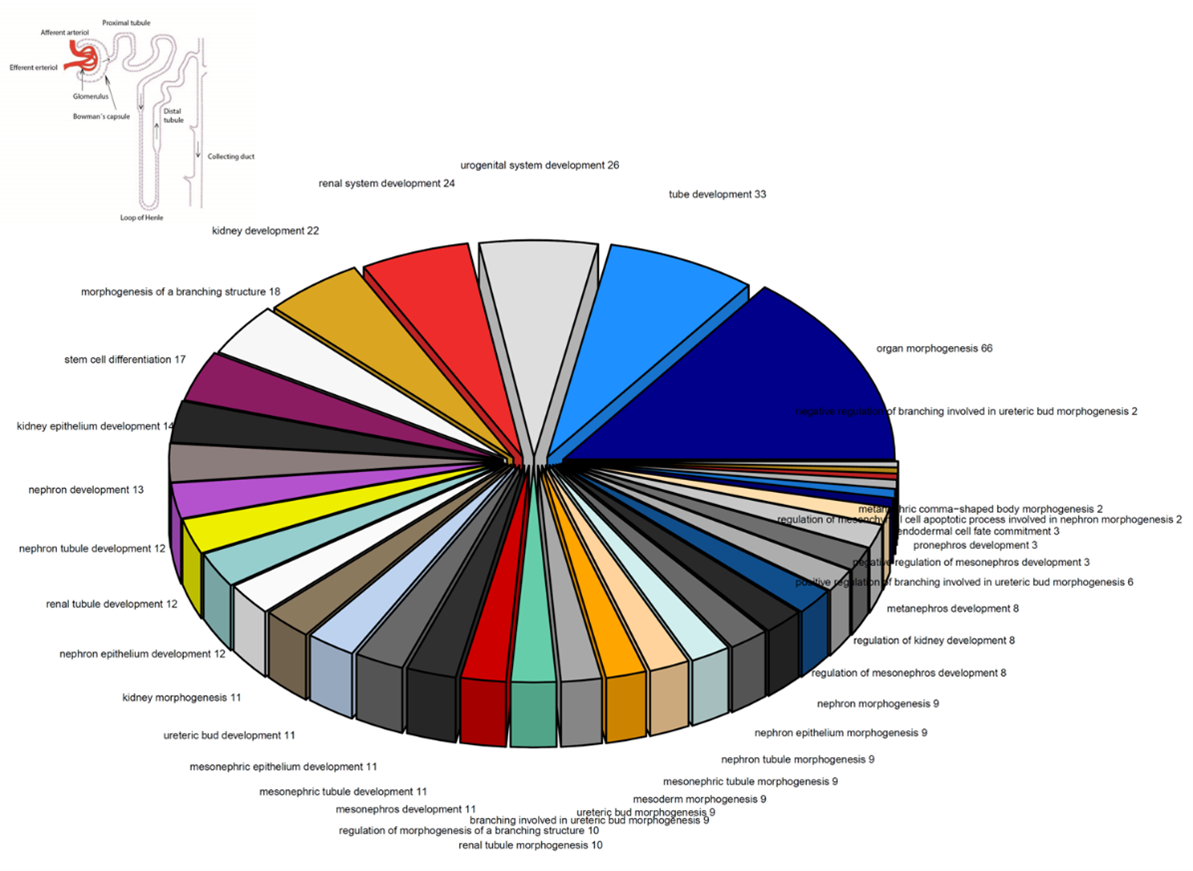Cell fate decisions
Dissecting cell fate decisions: Genes and associated signaling pathways which induce the specification of podocytes and proximal tubular cells.
Many of the signals that dictate cell fate decisions are arranged in feedback loops, so that cells entering one developmental pathway signal back to ensure that other cells are more likely to enter alternative pathways, and thus keep the relative proportions and positions of different renal tissues in balance. Furthermore, several signaling and transcriptional regulators are necessary for these early steps of kidney development. However, the cellular mechanisms by which this transcriptional network operates during human kidney morphogenesis are still largely unknown in human. Of course there are conservation between human and mouse but undiscovered differences might exist in cellular models of which is lacking in human.

UdRPCs express a plethora of genes associated with distinct biological processes active in the human kidney.Thus, UdRPCs are an ideal cell type for differentiating into kidney cell types obviating the need of iPSCs. Moreover, UdRPC differentiated cells retain their mature phenotypes.
Differentiation into podocytes

Culturing of SIX2-positive UdRPCs in Advanced RPMI supplemented with retinoid acid for 5 days at low density (70% confluency) (A, B) results in rapid differentiation into WT, CD2AP, NPHS1 and NPHS2 expressing podocytes (C).
Differentiation into proximal tubular cells

Culturing of SIX2-positive UdRPCs in renal epithelial growth medium (REGM) supplemented with CHIR, BMP2 and BMP7 results in differentiation into ZO-1 and Na+/K+-ATPase positive tubular cells- UdRTECs (urine-derived renal tubular epithelial cells).


